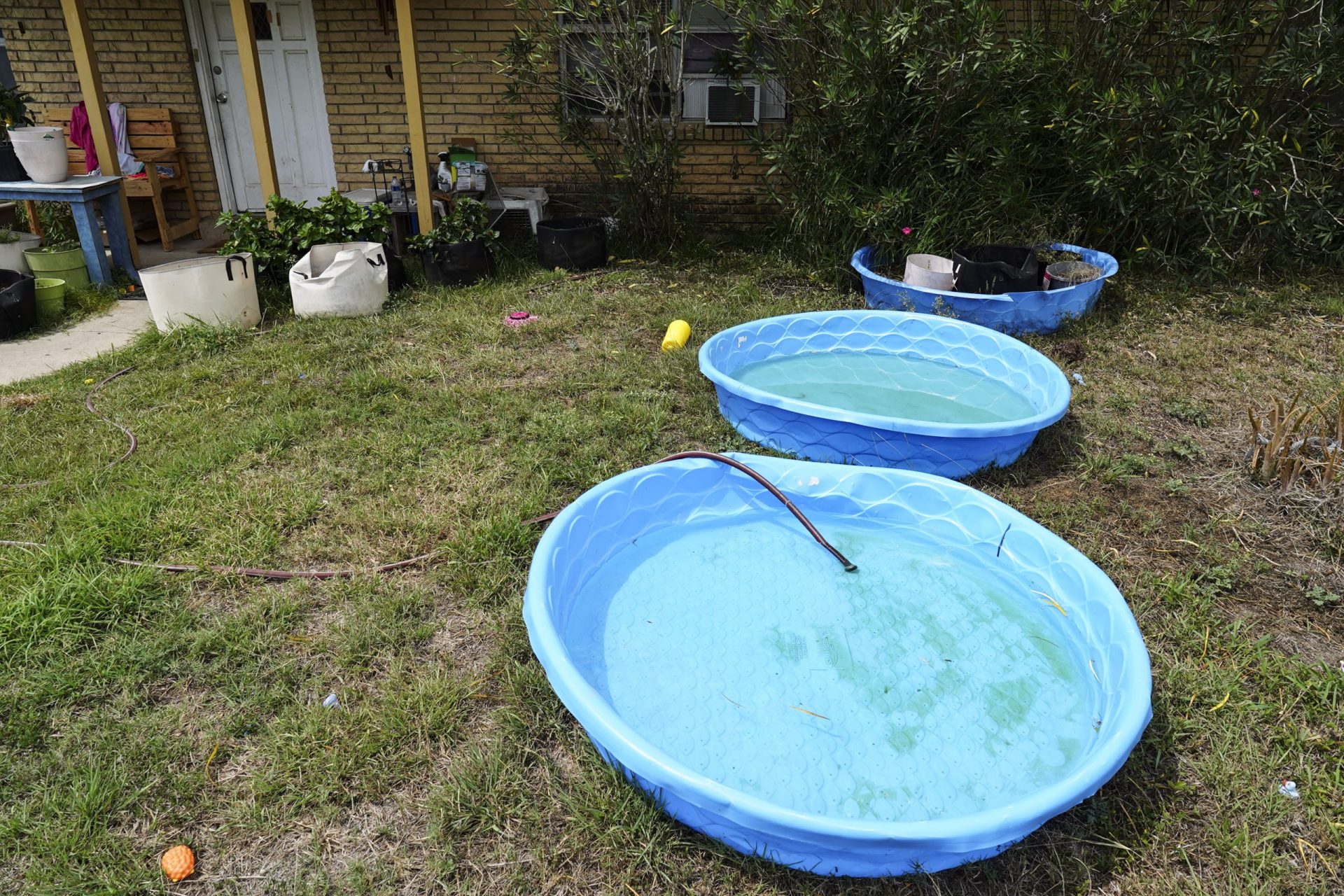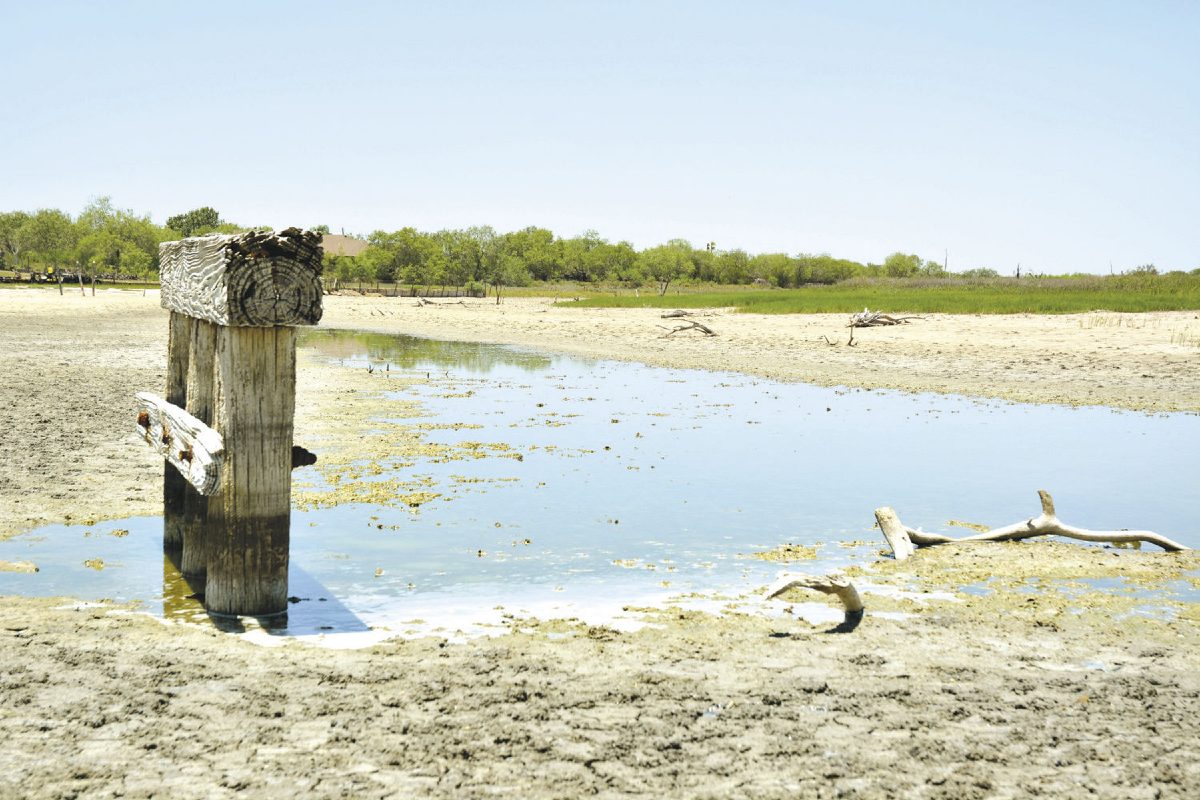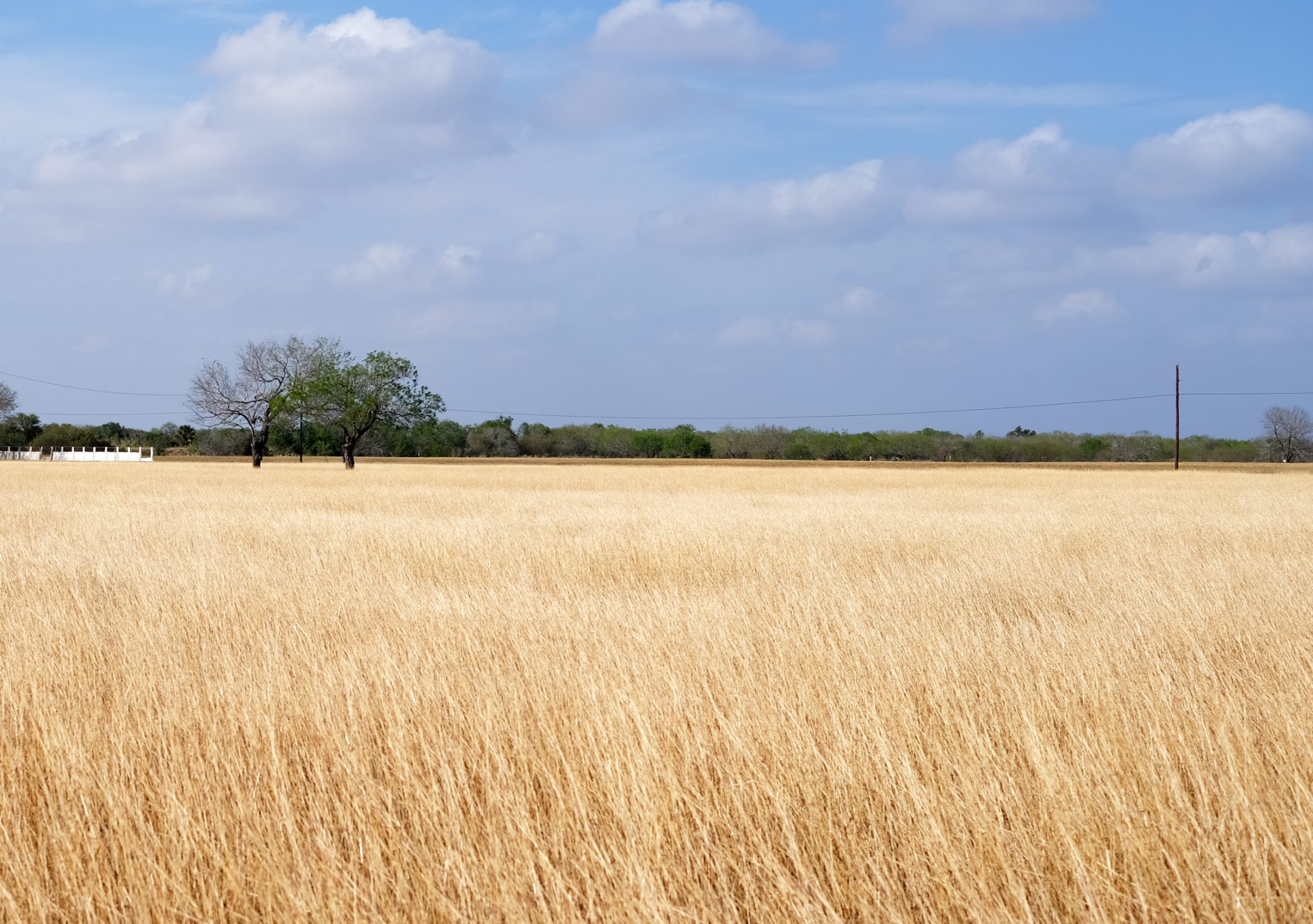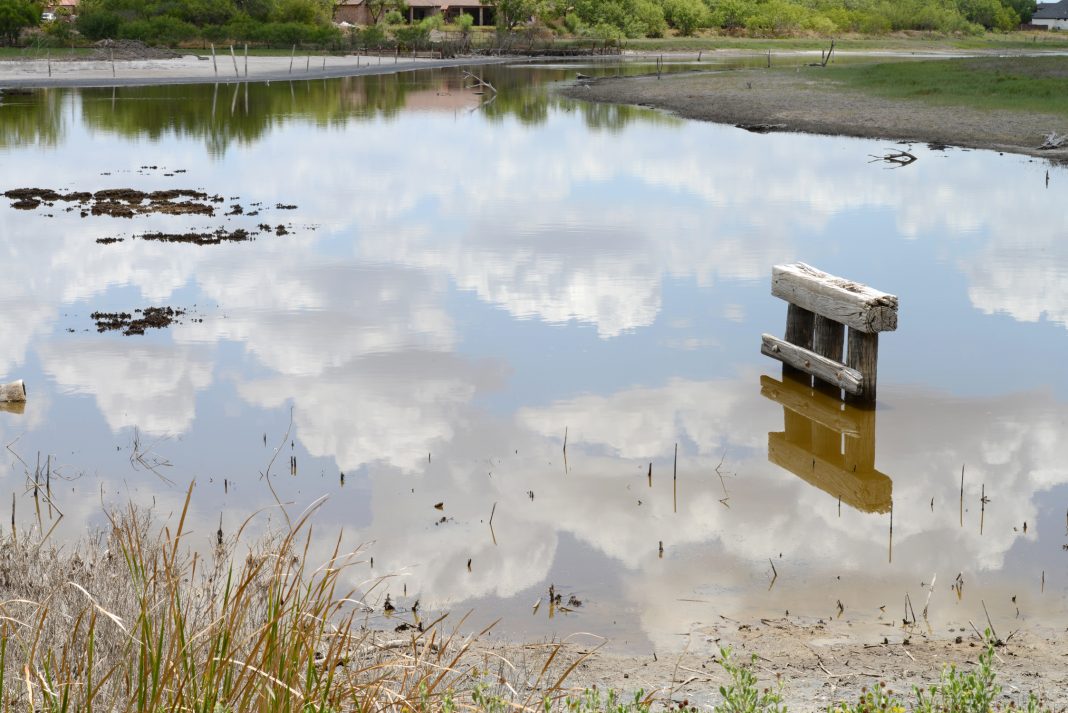|
Only have a minute? Listen instead
Getting your Trinity Audio player ready...
|
McALLEN — Medium range weather models from the National Weather Service in Brownsville indicate that the Rio Grande Valley will again experience a hot and dry spring this year, further exacerbating historic low water levels at the two international reservoirs that supply the region.
So, what will happen to municipal water supplies if those lake levels continue to fall? And what will happen if the irrigation canals that serve as the backbone of the Valley’s water infrastructure run dry?
They’re two big questions with no easy answer — for some officials, there’s no answer at all.
“I woke up last night about three in the morning thinking about that, and I thought, ‘What are we going to do?’” Jim Darling, former McAllen mayor and chairman of the Region M Water Planning Group said last week.
“I think there’s no solution,” he added a moment later.
Texas is divided into 16 distinct “water planning groups” that help local officials manage various state water supplies. Region M encompasses all four Valley counties and stretches north along the Rio Grande past Laredo and on to Eagle Pass in Maverick County.
But there’s a lot more nuance to Darling’s answer than appears at first blush — nuance that involves understanding the way the Valley gets its water.
Will Valley cities run out of water in the near future? Both Darling and Region M Vice Chairman Sonny Hinojosa don’t think so.
“I don’t think there’s a threat of the reserve running out of water. The challenge is gonna be in delivering that water,” Hinojosa, who also serves as the general manager of Hidalgo County Irrigation District No. 2, said.
Hinojosa was speaking of the so-called “Domestic, Municipal, Industrial reserve,” or DMI reserve.

It’s a volume of water held in combined storage at Amistad and Falcon international reservoirs.
Ownership of the water in the two reservoirs is divided between the United States and Mexico and is governed by a 1944 water sharing treaty between the two countries.
That treaty also outlines how the waters of the Rio Grande should be replenished. Since the vast majority of the river’s watershed lies in Mexico, it is obligated to deliver hundreds of thousands of acre feet of water to the reservoirs each year.
But Mexico has consistently fallen years behind schedule on the water deliveries. Last month, that unreliability led to the downfall of a 51-year legacy of sugar growing in the Valley, and it’s threatening to topple the local citrus industry next.
“The municipal water is reserved every month. Every month, there’s 225,000 acre-feet reserved in Amistad and Falcon for municipalities,” Hinojosa said.
Other volumes of water are set aside for operational reserves, mining operations and irrigation.
At the end of the line are the largest water consumers: farmers.
“If there’s water left over after that calculation, then we get an allocation,” Hinojosa said, speaking of agricultural users.
Agriculture developed in the Valley long before towns did. As such, by the early 1900s, farmers had built a complex network of irrigation canals crisscrossing the region when cities like McAllen, Edinburg and Harlingen first began to incorporate.
Cities here tapped into that system to access fresh water and have been reliant upon it ever since.

But in order for water to make it to a city’s water plant, it needs to be “pushed” there by agricultural water, otherwise only a fraction of the water will make it to a city’s limits, Hinojosa explained.
“The challenge is gonna be when that water’s released from Falcon and an irrigation district has to pump it through their system, if that irrigation district is out of water, then it takes a lot of water to get the municipal water to the customer,” Hinojosa said.
It’s a phenomenon called conveyance loss.
Water officials understand that some amount of water will be lost along the way due to things like evaporation. Add in dry irrigation canals and you create a recipe for even greater conveyance loss.
“It’s when you start running out of water that you’re not as efficient as you used to be,” Hinojosa said.
That’s already starting to happen.
Thus far, four irrigation districts have notified both their customers and state regulators that they are at risk of being unable to deliver water within the next 60 days.
That includes Hidalgo County and Cameron County Irrigation District No. 9, which services portions of the Mid-Valley, the La Feria Irrigation District, Cameron County Irrigation District No. 2, and the Delta Lake Irrigation District.
Water experts like Darling and Hinojosa have been sounding the water scarcity alarm for years, but say it’s only been recently — after the Rio Grande Valley Sugar Growers Association announced the immediate cessation of sugar production here in February — that local officials have begun to take note.
“The meetings we’ve had so far haven’t really been attended by too many cities, and it’s been IBWC talking about the Mexican debt,” Darling said of Region M’s public meetings.

Too often, officials wring their hands while saying the situation would be resolved if only Mexico made good on its debt.
“Well, it ain’t gonna happen,” Darling said.
Officials are at a loss for how to solve the scarcity issue once Mexico is removed from the equation, which is why Darling feels there’s “no solution.”
Hidalgo County Judge Richard F. Cortez succinctly summarized the issue during a recent news conference outside the Santa Rosa sugar mill.
“The only problem that we have is finding a solution to our problem that we’ve had for hundreds of years that we transport water to municipalities along with agricultural water through earthen canals,” Cortez said.
“We can’t change that overnight,” he said.
When asked how much money it would take to overhaul the Valley’s irrigation system, Darling scoffed before saying, “In the billions.”
And fixing that network would be the easy part, he said.
“The other component is (that) the river sucks as a delivery system,” Darling said.
Two decades ago, however, the Valley’s irrigators were doing their level best to upgrade the system.

Hinojosa explained how a severe drought cycle in the 1990s prompted Congress to pass legislation that allowed for a 50% cost share funding mechanism for infrastructure improvement projects.
The funding went toward installing impermeable liners in canals or converting them to pipelines.
But an amendment to the bill stalled when the districts sought authorization for another two dozen projects.
“Since 2002, it’s been sitting in D.C. and we can’t get it authorized,” Hinojosa said.
Hinojosa hopes local officials will help take up the bill’s cause, saying that the irrigation districts don’t have enough clout to do it alone.
“You can get a bigger bang for your buck investing in irrigation infrastructure improvements,” he said.
Meanwhile, Darling has begun to spearhead a new idea.
The former mayor hopes to create a “water bank” system that would allow water rights holders to better connect with water consumers, such as cities and developers.
“We’re working with the watermaster to come up with a water bank and a process where cities can buy water and get it transferred over to their irrigation districts,” Darling said.
“Right now, nobody knows where’s the market, who’s got it … who’s gonna divert it and those kinds of things,” he added a few moments later.
Ultimately, as reservoir levels continue to fall, frustrations continue to rise among water officials who have tried to use the plight of farmers to sound the alarm.
“No one cares as long as you can open your tap and you have water,” Hinojosa said. “They can’t put the pieces of the puzzle together.”
But Darling was more optimistic. For him, crisis may be the mother of invention — and a reason for hope.
“Maybe it’s a good thing we’re getting pushed to the brink so we have to actually come up with some practical solutions as opposed to praying for Mexico to be just,” Darling said.





